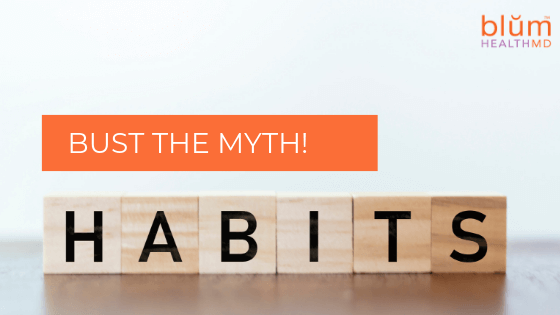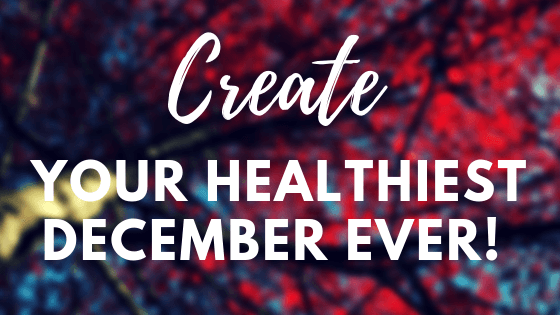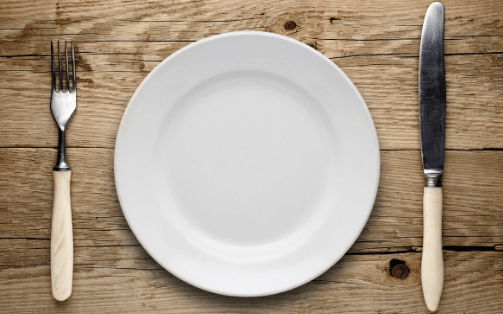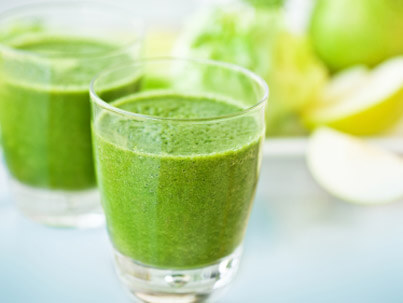
By Jill Grunewald
If you’re someone who keeps your finger on the pulse of holistic health and wellness, you’re likely doing so many of the “right” things: tending to your gut health and microbiome, eating nutrient-dense foods and minimizing processed foods, sleuthing out food sensitivities, eating organic as often as your pocketbook will allow, taking the right supplements, hydrating, exercising, and cooking at home as much as possible.
All of these factors are important for overall health and taming the inflammation that the science has shown can lead to degenerative disease—and they’re also, not surprisingly, important for thyroid and immune health. In fact, many are able to manage their Hashimoto’s (autoimmune hypothyroidism) and other autoimmune conditions simply by heeding the above.
Yet another important consideration is environmental toxins. I know, it’s a broad term—and one that overwhelms many. Unfortunately, all of us are victim of a modern world where chemicals abound. There’s no way around it. And when the amount of incoming toxins exceeds the outgo, our “body burden” increases, affecting our health on multiple levels including our hormones, immune system, respiratory system, and cognitive function.
The good news is that there are ways to mitigate the inflow of any environmental toxin (offense is your best defense), but there are also simple ways to support our glands of detoxification (see below) so that these chemicals don’t rule the roost and we don’t end up living life with our “toxin goggles” on.
As far as pesticides go, the benefits of eating a chemical-free diet—whether it’s “organic” or simply “sustainably-grown”—are vast and beyond the scope of this article. It’s indisputable that they’re chemicals. But there’s been a significant “campaign” attempting to convince us that they’re not harmful chemicals.
I don’t believe that every morsel of food that passes our lips needs to be organic and as the saying goes, “The dose makes the poison.” But know that “a little here, a little there” can increase your toxic body burden, slow thyroid function, and affect how our immune system functions.
Highlight: Your Thyroid
One of the primary reasons that pesticides (including herbicides, fungicides, insecticides, and nematicides) are so impactful to our endocrine system is that many of them interfere with thyroid hormone metabolism. Dr. Mark Hyman states, “One of the most important factors that lead to hypothyroidism is exposure to environmental toxins, such as pesticides, which act as hormone or endocrine disruptors and interfere with thyroid hormone metabolism and function.”
The list of pesticides commonly administered to crops is dizzying, but methyl iodide, for example, is a known carcinogen and neurotoxin and is associated with thyroid abnormalities. Additionally, a study published in the American Journal of Epidemiology found that women exposed to the pesticides aldrin, DDT, and lindane were at much greater risk of developing thyroid disease.
Another significant source of pesticides that many don’t consider is toxic lawn care chemicals, which are often tracked into homes from our shoes. (If you’re a golfer or live with one, know that golf courses contain some of the most toxic turf known.)
Pesticides also interfere with thyroid hormone conversion, interrupting our ability to convert T4 (our “storage closet” thyroid hormone) into T3 (the more bio-available “big daddy”). One of the issues with taking thyroid hormone replacement, while often warranted, is that some are unable to convert T4 into T3.
Pesticides are also considered xenoestrogens, the synthetic compounds that mimic estrogen. Xeno means “foreign” or “outside the body.” Among other issues, xenoestrogens set the stage for an increasingly common condition known as estrogen dominance (ED). (ED is somewhat of a loose term and doesn’t always mean that there’s excess estrogen—for women, you can be estrogen dominant simply by having too little progesterone. EDs don’t just affect women, by the way. For men, it can show up as aggression, decreased sex drive, or male breasts.)
Additionally, pesticides contain bromine, a well-known endocrine disruptor. Bromine is a halide that competes for the same thyroid gland receptors that uptake iodine, which inhibits thyroid hormone production and can result in hypothyroidism.
Highlight: Your Immune System
The association between pesticides and the immune system is robust. Remember, pesticides are xenoestrogens. Dr. Susan Blum states, “You need to know about [xenoestrogens] because they play a role in the development of autoimmune diseases. A group of researchers from the University of Milan conducted a review of all the studies looking at the role of environmental estrogens and autoimmunity. Over and over, they found a positive association between exposure to different agricultural chemical pesticides and [autoimmune diseases].
“We know that estrogen affects the immune system, because all immune cells have estrogen receptors and these hormones also encourage your immune cells to begin to make too many antibodies. The role of estrogens in autoimmune diseases has been well studied.
“… every chemical you are exposed to adds to your toxic load. Having a high toxic load makes it harder for your liver to handle pesticides and environmental estrogens, toxins that we know will affect your immune system.”
How to Reduce Your Toxic Load
Keep in mind, the recommendations below can apply to most any environmental toxin, whether it’s heavy metals, plastics, antibiotics and hormones in meat and dairy, flame retardants, and toxins in home cleaning supplies and skincare/cosmetics.
Firstly, I realize it’s not feasible for everyone to eat all organic/sustainable all the time. Do the best you can. If you can’t afford to go completely organic, avoid the “Dirty Dozen.” These are the foods shown to have the highest levels of pesticides. For more information on the “Dirty Dozen” (and the “Clean 15”), visit the Environmental Working Group.
Our bodies have six built-in detox mechanisms: lungs, skin, kidneys, colon, lymph, and liver. Once we slow the onslaught of toxins entering our bodies and also support these systems on an ongoing basis, we’re better able to rid ourselves of the toxins already present.
- For lungs, simply breathe, deeply and fully, on a regular basis. Overall, try to avoid shallow breathing. Additionally, high quality oils (coconut, olive, and avocado) and dark leafy greens (spinach, Swiss chard, kale, watercress, collard greens, arugula, etc.) help to support the lungs and cleanse our respiratory filtration system.
- For skin, dry brushing and sweating (via exercise or sitting in a sauna—or both) are two of the best detox strategies. Antioxidant-rich, free-radical fighting foods from a wide variety of colorful fruits and vegetables also help to keep our skin breathing. Quality oils are also helpful, as are bone broth and chlorophyll-containing foods like dark leafy greens, including cilantro, parsley, and sprouts.
- The kidneys filter our blood—more than 48 gallons of it daily. And what’s the best way to support our kidneys? Drink water. Get plenty of it and make sure it’s clean and filtered. Kidney-supportive foods include cranberries, blueberries, lemon, beets, sea vegetables, and spinach.
- It’s critical that your colon is working optimally. If waste backs up in your bowels, toxins can be reabsorbed into the body. Daily fiber helps to keep our trains running smoothly—if constipation is an issue, supplemental fiber may be in order. Some experts claim that fiber is the most clinically important deficiency in our diet. Fiber-rich foods include true whole grains (vs. processed grains/flour), vegetables, fruits, nuts, seeds, and legumes.
- The lymphatic system is a head to toe network of organs, nodes, ducts, and vessels that transport lymph fluid. It removes waste from every cell in our body while helping to regulate our immune system. One of the biggest contributors to lymph stagnation is dehydration. Other strategies for keeping things flowing are dry brushing, sipping warm water throughout the day, and drinking warm water with fresh lemon juice first thing in the morning. Sitting in a sauna and exercising also helps.
- Ah, the liver. Another “big daddy.” It’s a giant filter and next to our skin, is our largest gland of detoxification. Not only does it filter toxins from food, water, pharmaceuticals (including supplemental hormones), air, and what our skin comes into contact with, but it also helps with thyroid hormone conversion (T4 to T3).
Dr. Susan Blum states, “Think of your detox system as a little engine that is inside every cell, with the biggest engine in the liver.”
Gentle liver support includes:
- Drinking warm lemon water first thing in the morning
- Choosing herbs (via teas, foods, or supplements) like dandelion, nettles, milk thistle, and turmeric
- Getting plenty of fiber
- Choosing DIM-rich foods (diindolylmethane) found primarily in the cruciferous vegetable family: cabbage, kale, broccoli, Brussels sprouts, etc. (You don’t have to worry about these foods slowing your thyroid function.)
- Other liver-supportive foods include garlic, walnuts, grapefruit, avocado, dark leafy greens, beets, olive oil, coconut oil, apples, and apple cider vinegar.
Remember, offense is your best defense. It’s not only important to be mindful of where toxins live and how to best avoid them, but also to support your glands and organs of detoxification. It doesn’t have to be complicated—and as you can see, some of the most delicious whole foods can give toxins the heave ho. Get these foods regularly and you’ll be way ahead of the game.
Jill Grunewald, HNC, FMCHC, is a functional nutrition and hormone coach and best selling author of The Essential Thyroid Cookbook.









